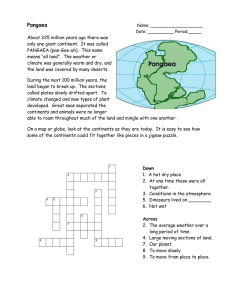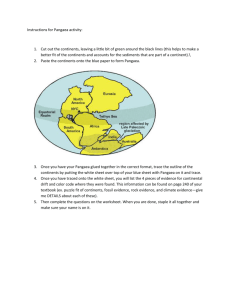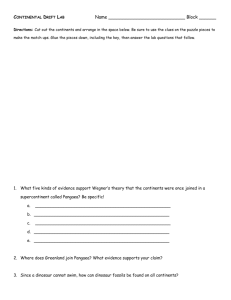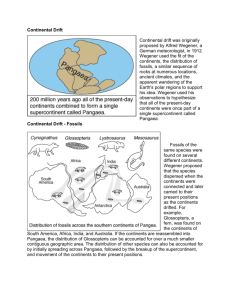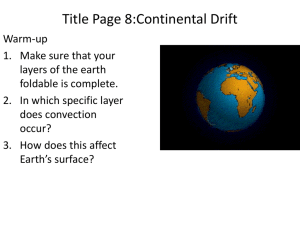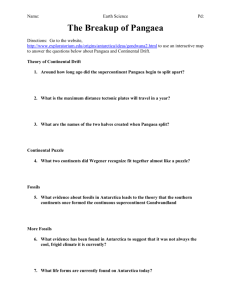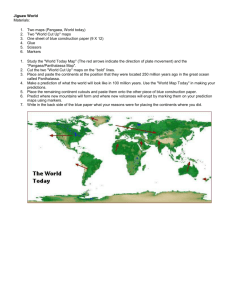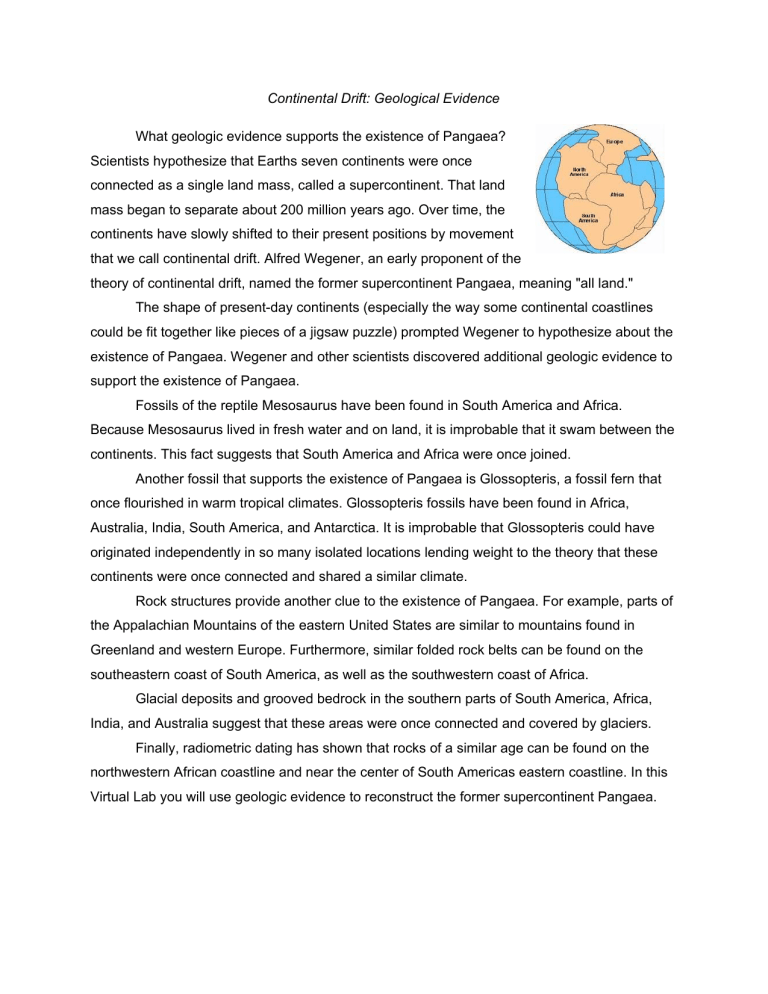
Continental Drift: Geological Evidence What geologic evidence supports the existence of Pangaea? Scientists hypothesize that Earths seven continents were once connected as a single land mass, called a supercontinent. That land mass began to separate about 200 million years ago. Over time, the continents have slowly shifted to their present positions by movement that we call continental drift. Alfred Wegener, an early proponent of the theory of continental drift, named the former supercontinent Pangaea, meaning "all land." The shape of present-day continents (especially the way some continental coastlines could be fit together like pieces of a jigsaw puzzle) prompted Wegener to hypothesize about the existence of Pangaea. Wegener and other scientists discovered additional geologic evidence to support the existence of Pangaea. Fossils of the reptile Mesosaurus have been found in South America and Africa. Because Mesosaurus lived in fresh water and on land, it is improbable that it swam between the continents. This fact suggests that South America and Africa were once joined. Another fossil that supports the existence of Pangaea is Glossopteris, a fossil fern that once flourished in warm tropical climates. Glossopteris fossils have been found in Africa, Australia, India, South America, and Antarctica. It is improbable that Glossopteris could have originated independently in so many isolated locations lending weight to the theory that these continents were once connected and shared a similar climate. Rock structures provide another clue to the existence of Pangaea. For example, parts of the Appalachian Mountains of the eastern United States are similar to mountains found in Greenland and western Europe. Furthermore, similar folded rock belts can be found on the southeastern coast of South America, as well as the southwestern coast of Africa. Glacial deposits and grooved bedrock in the southern parts of South America, Africa, India, and Australia suggest that these areas were once connected and covered by glaciers. Finally, radiometric dating has shown that rocks of a similar age can be found on the northwestern African coastline and near the center of South Americas eastern coastline. In this Virtual Lab you will use geologic evidence to reconstruct the former supercontinent Pangaea. Procedure: 1. Click the left and right arrows to see each of the seven continents. 2. Click the puzzle piece to see three versions of each continent. The different versions appear in random order and represent the continents shape 250 million years ago, 66 million years ago, and today. 3. Determine which version shows the continents shape 250 million years ago and click it. 4. Drag the continent to the place on the map where you think it was located 250 million years ago. 5. Examine the shape of another continent. Click the buttons in the Legend for geologic clues. Note: During the existence of Pangaea, continents fit together like pieces of a jigsaw puzzle. Also, geologic similarities were found in connected areas. 6. Using information about the shape and geology of the continents, drag each of the seven continents to the map to reconstruct Pangaea. 7. Click the Check button. If you dragged a continent from the wrong time period or to the wrong location on the map, it will be highlighted yellow. Drag it to the Puzzle Box and try again. 8. When all the continents of the correct age are in the correct location on the map, click the Present Day button to see an animation of continental drift. 9. Complete the questions below. Mesosauru s Fossils Glossopter is Fossils Appalachia n Mountains Folded Rock Belts Rocks of Similar Age Evidence of Glaciation Africa Antarctica Australia Eurasia India North America South America 1. Describe the process by which you used to reconstruct Pangea. Did you use the legend? Which clues were the most helpful? 2. Which types of geological evidence support the existence of Pangea? 3. Which type of geological evidence best supports how the East Coast of North America was once joined with the West Coast of Europe? 4. How do you think Wegener’s background as a Geologist contributed to his hypothesis that the continents were once joined?

